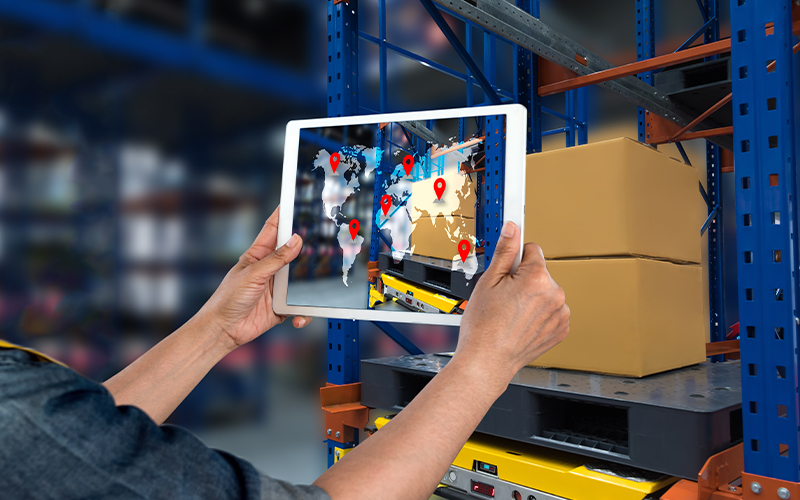Supply Chain
Artificial intelligence – A panacea for supply chain issues
Semiconductors, baby formula and beer? What could possibly be common between these seemingly unrelated products? Nothing much, apart from the fact that they are scarcely available on the shelves of retail outlets these days.
Supply chains all over the world have been breaking down. First it was the pandemic-led lockdowns, then it was the large container ships being wedged in the Suez Canal and now it is the war in Ukraine.
Technology should have been able to iron out at least some of the issues, right? Unfortunately, that doesn’t seem to be the case. While supply chain leaders agree that investments in technology are important to tighten up supply chain operations, returns on these investments have not been as substantial as initially assumed. PwC conducted a survey among supply chain executives who seemed to think this to be the reason behind the uneven adoption of technology in supply chain operations. It seems like we are not as close to having production, warehousing, and transport as automated and technology enabled as was widely predicted.
Is Artificial Intelligence the panacea that everyone is looking for?
Artificial Intelligence, on the other hand, seems to be an area that holds potential. As per news reports, the global supply chain AI market is estimated to reach up to $13.5 billion in 2026. According to a study by McKinsey, AI adopters in supply chain have seen an improvement in their logistics costs by 15 per cent, inventory levels by 35 per cent and service levels by 65 per cent. AI can help in predicting demand, improving automation, and increasing the efficiency of transportation. It can provide supply chain managers with deeper insights and control over all aspects of the supply chain.
So, why aren’t there more adopters of technology and AI? Money is one key issue. Implementation of AI costs a lot of money. Besides, supply chain is now global, and globalisation adds complexity in terms of sources, delivery systems, regulations, and other geo-political risks. This makes supply chain management very complicated. Moreover, since AI works best when it is combined with human brain power, there needs to be adequate training, upskilling, and re-assigning of human resources to work with these systems. Training the AI systems with good quality data is another challenge.
A study by BCG and Aera Technology tried to understand why companies were struggling to maximise value from AI. The root cause was found not with the technology but with its application. AI is mostly being used for analytics and prediction, whereas the current requirement is to use AI to look at patterns in big data that humans are unable to see. The current inventory and planning systems work on static lead times and demand predictions while in reality everything is dynamic today, including lead times. This leads to poor decision-making and inadequate planning, which in turn drives up port congestion. Active management of shipments is now more important than demand forecasting.
Supply chains are only reacting to events that have already occurred, which does not give them the advantage of taking care of issues like the bullwhip effect. AI has the ability to enable companies to look ahead and plan for supplies before a shortage happens or there is a drop in demand.
Focus on issues that need to be improved in the supply chain
AI facilitates making recurring decisions: it recognises patterns that humans cannot see in big data. Data-driven AI systems look at historical data of how various phenomena (natural and economic) impact variables and make predictions on what is likely to happen in the near and extended future, making it easier to find optimal solutions to supply chain issues.
Another area that AI and ML can help in is supplier unreliability. The PwC survey found that managers are very concerned about supplier risk. Inability to procure raw materials, operational issues at the supplier’s end and the financial health of suppliers are all seen as risk factors. AI can offer valuable insights into the performance of suppliers, which include product-related issues and missed deliveries. By running different scenarios based on lead times, prices, and other parameters, it is possible to choose more reliable suppliers or predict if there are going to be issues.
Frequent turnover among supply chain employees is also seen as a big issue by 58 per cent respondents surveyed by PwC while only 23 percent agree that they have the necessary technological skills to meet the goals of the company. This has prompted managers to use AI to understand attrition rates and the reasons for attrition so that they can take appropriate decisions before employee turnover becomes a major supply chain issue.
However, AI projects need to be agile*. While project delivery times of nine to 18 months were considered normal three years ago, with all the global upheavals being witnessed, AI projects need to become fast and flexible. Hence, many companies are pushing project cycles to two to three weeks in order to get immediate actionable information.
AI in the Supply Chain: A Collaborative Partner, Not a Rival
For AI to be useful and profitable in supply chain operations, it has to be able to tackle issues that affect operations on a real-time basis. Organisations should be able to deploy AI systems that are integrated across functions in order to ensure that they can continuously learn from enterprise-wide as well as external data to recognise patterns and make decisions.
Lastly, AI works only when combined with human brain power. It can deliver only when everyone is on board with the decision to deploy these systems. It is, after all, a sizeable investment that has to be combined with organisational changes, process-related changes and upskilling of employees.
* For organizations on the digital transformation journey, agility is key in responding to a rapidly changing technology and business landscape. Now more than ever, it is crucial to deliver and exceed on organizational expectations with a robust digital mindset backed by innovation. Enabling businesses to sense, learn, respond, and evolve like a living organism, will be imperative for business excellence going forward. A comprehensive, yet modular suite of services is doing exactly that. Equipping organizations with intuitive decision-making automatically at scale, actionable insights based on real-time solutions, anytime/anywhere experience, and in-depth data visibility across functions leading to hyper-productivity, Live Enterprise is building connected organizations that are innovating collaboratively for the future.







